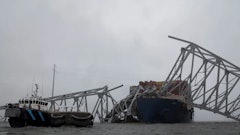Considering contractors tend to be a fairly conservative bunch, optimism going into 2005 is at a surprisingly high level. The annual CIT Construction Industry Forecast shows confidence among the 900+ contractors and equipment distributors surveyed at an all-time high.
"In last year's CIT Construction Industry Forecast, U.S. construction industry executives told us they could see the light at the end of the tunnel after several years of economic uncertainty," says Roy Keller, president of CIT Equipment Finance. "This year, it looks like the industry has made its way out of the tunnel altogether and the forecast is brighter than at any time in the last decade."
There are plenty of reasons for this positive outlook. Economic growth is on the upswing, with real GDP forecast at around 3.5% next year. Interest rates are predicted to remain relatively low, and the jobless rate should continue its improvement. These factors should strengthen consumer spending, and help sustain a strong residential housing market.
The resulting rebound in state tax revenues is likely to generate investment in construction projects placed on hold during the economic slowdown. Although still somewhat constrained during 2004, the Portland Cement Association (PCA) "U.S. Construction and Cement Outlook" indicates public construction spending is likely to grow by 4% in 2005.
The highway and road construction sector is also likely to see gains of roughly 4.5%, thanks to availability of added federal funding. Congress has signaled intentions to appropriate a record $34.6 billion for federal highway investment in FY 2005, states the American Road & Transportation Builders Association (ARTBA). Congress has also voted to shift $1.9 billion of FY 2004 funding into FY 2005. Overall, funding will be $4.8 billion higher compared to 2004 levels.
The likely reauthorization of TEA-21 by the middle of next year will further boost highway funding levels. The PCA's Washington office believes the Bush Administration is willing to support a figure of $299 billion for the six-year program, significantly higher than previously announced. This should provide a substantial injection of funds beginning in 2006.
The brightest star on the horizon, however, appears to be non-residential construction. PCA forecasts that the gradual recovery in capacity and vacancy rates will bring gains of up to 9.9% in non-residential construction activity next year.
There are some caveats to all this optimism. High oil prices coupled with rising steel and other material costs have already driven growth figures down for 2004, and could have a substantial impact on growth in 2005. For example, if materials stabilize at current levels, the cost of highway construction would rise 2%, absorbing about half of the federal highway investment increase, ARTBA predicts. A further rise in costs could consume nearly all of the projected increase in the value of highway construction.
Despite such downside risks, the construction market appears to be headed in the right direction. The PCA expects U.S. inflation-adjusted construction spending to increase 2.9%, reaching $745 billion by the end of 2005.


























